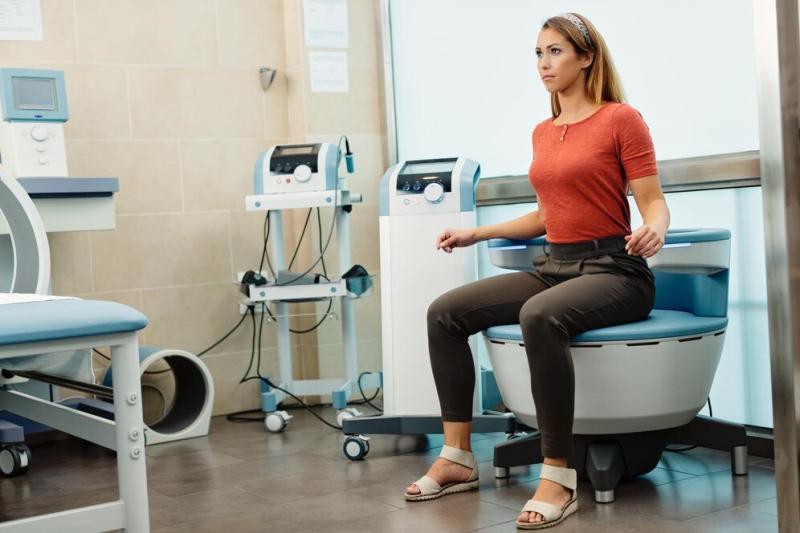Lifestyle and Dietary Changes
The first step in treating chronic idiopathic constipation involves making lifestyle and dietary changes to help regulate bowel movements. Getting regular exercise can help stimulate the intestines and promote regular bowel habits. Aim for at least 30 minutes of physical activity on most days. Staying hydrated by drinking plenty of water is also important, as constipation can sometimes be caused by not consuming enough fluids.
Chronic Idiopathic Constipation (CIC) Treatment is recommended to add more fiber to the daily diet through whole grains, fruits, and vegetables. High-fiber foods help add bulk to stool and soften it, which makes it easier to pass. Gradually increasing fiber intake over time is best to avoid abdominal discomfort. Good fiber sources include bran, beans, lentils, flaxseed, and prunes. Staying regularly hydrated is important when increasing fiber, as this helps the fiber work properly. Caffeinated and alcoholic beverages should be consumed in moderation as they can have a drying effect and worsen constipation symptoms.
Medications
For patients whose constipation does not improve with lifestyle and dietary changes alone, medications may provide additional relief. Over-the-counter laxatives are usually the first-line treatment approach. Bulk-forming laxatives like methylcellulose add bulk to stool and soften it. Stool softeners like docusate sodium work by adding moisture to stool. Osmotic laxatives like polyethylene glycol work by retaining fluid in the intestines via an osmotic effect. Stimulant laxatives like senna promote bowel movements by aggravating the intestines.
Prescription medications may be needed for patients with more severe symptoms. Lubiprostone is a prescription medication that works on chloride channels in the intestines to increase fluid secretion and urgency to have a bowel movement. Linaclotide works on guanylate cyclase-C receptors in the intestines to relax the muscles and increase fluid secretion. These prescription medications can provide relief for symptoms when over-the-counter options are not effective enough. Medication should be taken as directed long-term to maintain regular bowel habits.
Neurostimulation Therapy
For some severe cases of constipation that do not respond well to lifestyle changes or medications, neurostimulation therapy may be an option. This involves using mild electrical currents to stimulate nerves in the sacrum or nerves around the colon to encourage bowel movements. Sacral nerve stimulation uses a small implant placed near the tailbone that sends electrical pulses. Transcutaneous tibial nerve stimulation involves placing electrodes on the skin of the lower leg near the tibial nerve to stimulate bowel contractions.
Both of these neurostimulation approaches are usually only considered after more conservative treatment options have failed. Patients need to undergo a test stimulation period first to determine if they get adequate relief from the stimulation. The implant is then surgically placed if initial testing shows positive results. Neurostimulation therapy has been shown to significantly improve symptoms and quality of life for many patients with refractory constipation.
Biofeedback Therapy
Biofeedback uses sensors and visual or audio feedback to help patients gain voluntary control over certain bodily functions like bowel movements. For constipation, biofeedback focuses on retraining the abdominal and anal muscles. Sensors are placed on the abdomen and anus during sessions to monitor muscle activity and pressure changes. Patients then receive visual or auditory feedback on screens as they work to relax abdominal muscles and properly coordinate anal muscle contractions.
Over multiple sessions with a trained therapist, biofeedback aims to teach the muscles new patterns of functioning to restore normal bowel habits. It has been shown in studies to significantly improve constipation symptoms for some patients by re-educating the pelvic floor muscles. Biofeedback is usually recommended for those whose constipation stems partially from issues like delayed transit time or dyssynergia between the pelvic floor and abdominal muscles. Consistency is key for it to effectively help retrain muscle function.
Surgery
In very rare and severe cases where all other treatment options have been unsuccessful, surgery may be considered. Some surgical options include removing or relaxing parts of the colon or rectum to make it easier to pass stool. A procedure called STARR (stapled transanal rectal resection) removes a small portion of the rectum and wraps the remaining tissue inward to effectively make the passageway larger. Surgery should only be considered as an absolute last resort for chronic constipation, as it comes with risks and does not always provide complete and long-lasting relief of symptoms.
Alternative Therapies
For some, complementary alternative therapies may provide extra relief when used alongside standard medical treatments. Acupuncture aimed at acupoints on the lower back and abdomen has shown benefits for constipation in some studies. Herbal supplements derived from plants with laxative properties (such as senna, cascara sagrada, or psyllium seed husk) are options some patients find helpful. Probiotics may help restore healthy gut bacteria balance. Lifestyle practices like yoga or reflexology target relaxation of abdominal and pelvic floor muscles. More research is still needed, but integrated treatment combining various effective options often works best at reducing symptoms long-term.
Chronic constipation can have many root causes and poses a difficult challenge to manage. A multi-modal treatment approach incorporating dietary changes, prescription and OTC medications, neuromodulation, biofeedback or alternative therapies based on each patient's individual case is usually most effective. Close monitoring by a doctor and adherence to a long-term management plan is important for achieving and maintaining symptom relief. With patience and consistency, patients can find constipation treatment options to improve their daily functioning and quality of life.
Get This Report In Japanese Language
Get This Report In Korean Language
About Author:
Vaagisha brings over three years of expertise as a content editor in the market research domain. Originally a creative writer, she discovered her passion for editing, combining her flair for writing with a meticulous eye for detail. Her ability to craft and refine compelling content makes her an invaluable asset in delivering polished and engaging write-ups.
(LinkedIn: https://www.linkedin.com/in/vaagisha-singh-8080b91)
